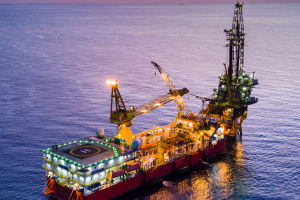An electric windmill, also known as a wind turbine, is a device that harnesses wind energy to generate electricity. It consists of a rotor, a generator, and a support structure.
The rotor is the central component of an electric windmill. Typically, it is composed of multiple blades that can adjust their angles based on the direction and strength of the wind. As the wind blows across the blades, they generate kinetic energy that causes the rotor to spin.
The rotor is coupled to a generator that transforms the rotor's rotational energy into electrical energy. Inside the generator, coils interact with a magnetic field. As the rotor spins, the relative movement between the coils and the magnetic field induces an electric current, generating electricity. A support structure, typically a tower, anchors the rotor and generator at a height optimized for harnessing maximal wind energy. The tower's height is tailored to local wind conditions and the prevalence of wind resources.
The operation of electric windmills is based on Betz's law, which states that the power extracted from the wind is proportional to the cube of the wind speed. Therefore, selecting an appropriate location with ample wind resources is crucial for maximizing the efficiency and output of an electric windmill.
Electric windmills are considered a clean energy source since they do not emit greenhouse gases or other pollutants during operation. They play a significant role in renewable energy generation and can be widely deployed in regions abundant in wind resources.
When it comes to installing electric windmills, several factors need to be taken into consideration:
1. Wind resources: Electric windmills should be installed in areas with consistent and sufficient wind resources.
Open areas, coastlines, mountains, plateaus, and large open plains are prime locations for harnessing wind energy. The stability of wind speed and direction directly impacts the performance of electric windmills.
2. Land usage: Installing electric windmills requires land allocation, especially for wind farms consisting of multiple turbines.
Legal and regulatory frameworks must be followed when utilizing land, while potential conflicts with other land uses and environmental preservation must be considered.
3. Infrastructure: Adequate infrastructure is necessary to support the installation and operation of electric windmills.
This includes roads for accessibility, transmission lines for connecting to the electrical grid, and substations for managing and distributing the generated electricity. The availability and cost of necessary infrastructure play a role in determining the installation site.
4. Environmental impact: Environmental considerations are essential when deploying electric windmills. Factors such as the protection of wildlife, the impact on ecosystems, and the concerns of local communities need to be assessed.
Environmental impact assessments should be conducted, and appropriate measures should be implemented to mitigate any negative effects.
Electric windmills have been successfully installed in various regions worldwide. Countries such as China, the United States, Germany, Denmark, and India have made significant investments in large-scale wind farms, leading to substantial advancements in wind energy generation.
As technology continues to advance and wind energy resources are further utilized, electric windmills are expected to be increasingly deployed in diverse locations globally.


